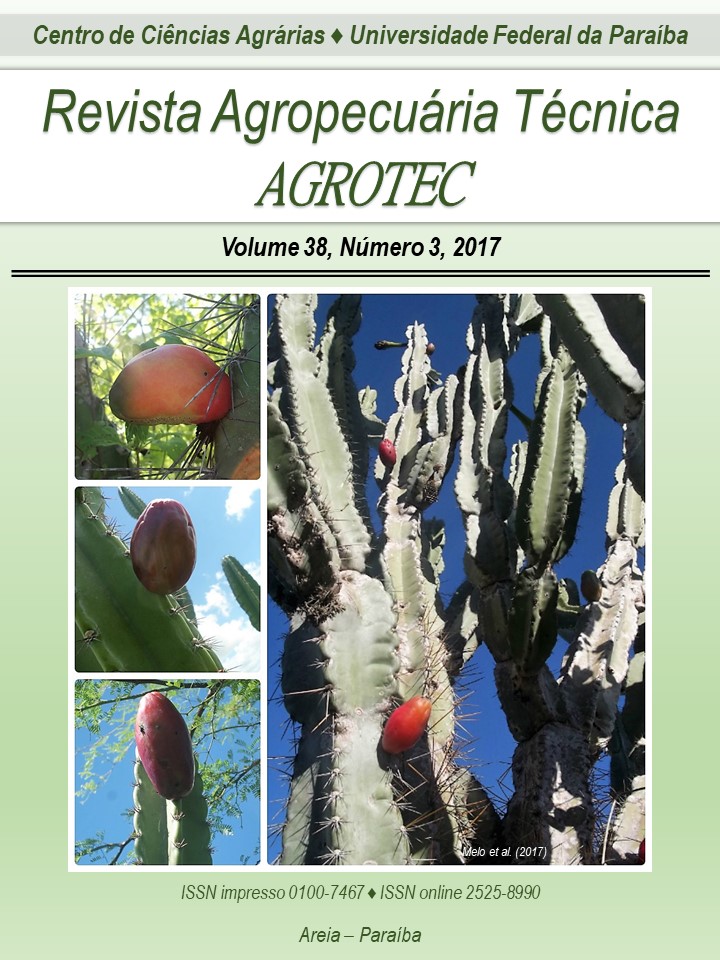Kinetics of freezing and effective thermal diffusivity of fava beans
DOI:
https://doi.org/10.25066/agrotec.v38i3.29978Keywords:
Phaseolus lunatus L., Grain, Cooling, Cryogenic temperatures, Freezing curvesAbstract
The fava beans is a legume grown in the Northeast and there is a consumer market assured to its consumption, because in addition to providing supply vegetable protein yet a different flavor to the population, such as beans substitute, becoming a source of income for producers. It is a culture that soon after harvest is subjected to drying process for conservation, but verify the behavior of the grains in different conditions is important as a way of conservation. The freezing is a way of preservation which inhibit microbial growth slows down and virtually all metabolic process. Given the above, we had to aim to humidify the fava beans (Phaseolus lunatus L), up to 30% b.u, and determine the behavior of freezing kinetics using different temperatures: -15 to -25°C; -50 And -80°C (semi-cryogenic temperatures);-170°C(nitrogen vapor) and -196°C (cryogenic temperature) and the thermal diffusivity. The equation used for obtaining the freezing kinetics was unidirectional cooling. Freezing curves obtained,at all temperatures,studied did not distinguish between the three typical phases of freezing curves of pure water; indicating that 30% is a value relatively low percentage of humidity;In relation to diffusivity, a tendency of increase occurred with the decrease of the temperature.


